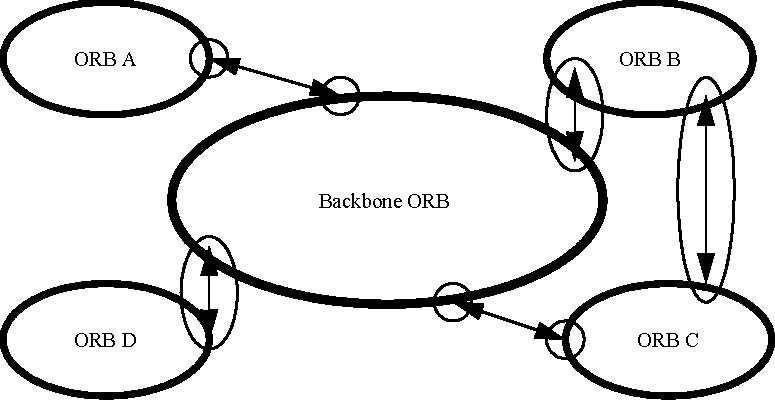
| Previous | Table of Contents | Next |
In the case of network-aware ORBs, we anticipate that some ORB protocols will be more frequently bridged to than others, and
so will begin to serve the role of “backbone ORBs.? (This is a role that the IIOP is specifically expected to serve.) This
use of “backbone topology? is true both on a large scale and a small scale. While a large scale public data network provider
could define its own backbone ORB, on a smaller scale, any given institution will probably designate one commercially available
ORB as its backbone.

Figure 13-3 An ORB chosen as a backbone will connect other ORBs through bridges, both full-bridges and half-bridges.
Adopting a backbone style architecture is a standard administrative technique for managing networks. It has the consequence
of minimizing the number of bridges needed, while at the same time making the ORB topology match typical network organizations.
(That is, it allows the number of bridges to be proportional to the number of protocols, rather than combinatorial.)
In large configurations, it will be common to notice that adding ORB bridges doesn’t even add any new “hops? to network routes,
because the bridges naturally fit in locations where connectivity was already indirect, and augment or supplant the existing
network firewalls.